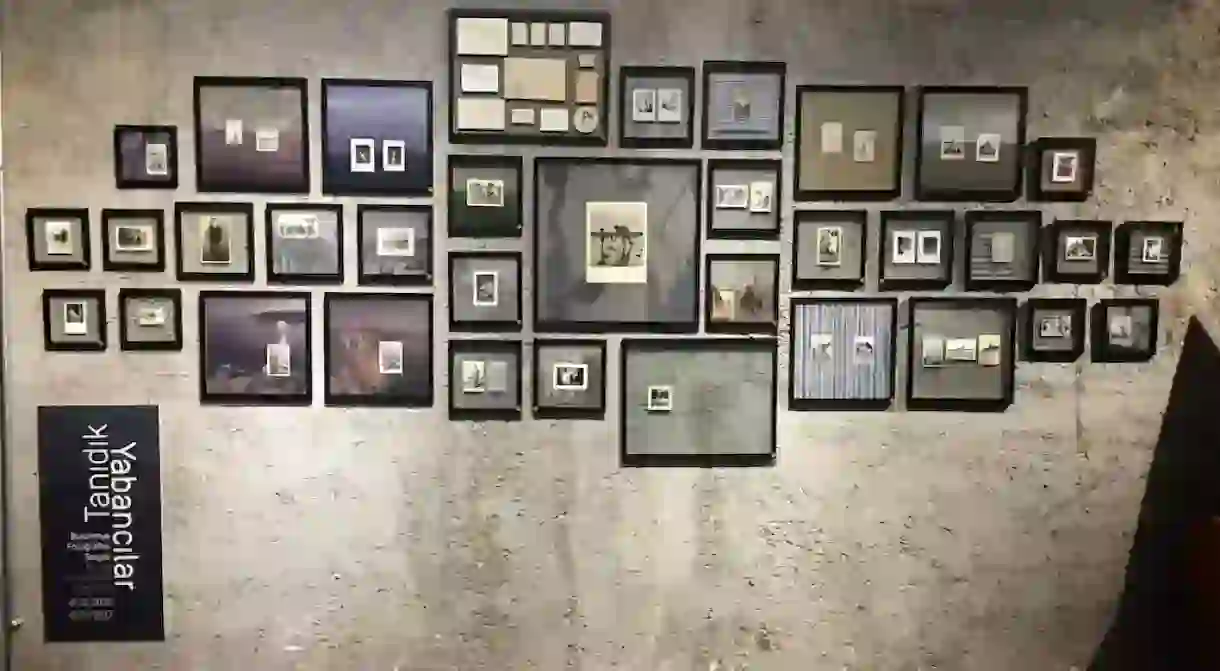Familiar Strangers: An Istanbul Exhibition Of Nostalgic Photography

Having helped in designing major events such as Istanbul Design Week and Art Istanbul, Aylin Sayek co-founded the event company Good News Communications and Events in 2009. A native of Arsuz (a small fisherman’s village in Hatay), Sayek also has a deep passion for antique dealers and flea markets, where her discovery of old black and white photographs spawned her first exhibition currently on display at Souq Dükkan Kanyon. On until January 15th, Familiar Strangers is composed of carefully selected memories and stories that Sayek has been collecting for years. We had a chance to talk to the designer and collector about her project and the importance of nostalgia.
How did the idea for Familiar Strangers develop?
Ever since I can remember I’ve had a deep love for second hand and antique dealers as well as flea markets. About 12 years ago I came across an old photo album at a second hand shop, and I questioned why such an important collection of memories had ended up there. It was then that I realized how these photographs inevitably faced a sad end, and in order to save the album from being thrown away, I bought it for a small sum of money. After that point, I began buying old photographs, not to become a collector, but to somehow save them from their inevitable disappearance.
After I did some research I discovered that the field of Found and Vernacular Photography has a lot of collectors, themed exhibitions, and photo books. It’s very different from art photography; the photos weren’t originally taken to be exhibited or to become a piece of art, but to immortalize a moment, to write a note on the back and send it to someone, to remember. In other words, without intent, these photos are both conceptual and documentative. They are someone’s memory, but due to the stories that they evoke in the viewer, they are also conceptual.

Where did you find these photos?
In Turkey and abroad, from flea markets and second hand stores, from used bookstores and the internet. Some of them were gifts because they were going to be thrown away, but most of them I fell in love with at first sight and bought.
When you were buying these photographs was there something specific you were looking for? Is there a theme that ties them all together?
Sometimes I bought them because of a story, such as a couple lying together on the beach. Other times because I found them entertaining, such as a group of people dressed as clowns. Sometimes, I bought them because they were just striking, like a gentleman in 1934 posing in his finest outfit. I can say that I followed my emotions while collecting the photos, but when I looked at them all together, a theme did emerge, and inevitably I began collecting accordingly. For example, summer photographs, photographs at a table, little siblings… at the end, there were so many worthy photos and stories that it really was difficult to choose from among them.

What do you hope people feel when they see these photos?
The photos are all actually quite ‘normal,’ because our parents and grandparents have photos like these as well. However, these photos are of people you don’t know and all their memories and stories that you will never know, and it’s all actually a bit private. When you look at these photos you inevitably wonder about their lives and start to make up tales. And everyone ends up wondering something that will never be answered, and whether those people are still alive. I think as a whole the photos show how similar people’s lives are. Today, we take similar photos, but the difference is the absurdity of smartphones, where everything has to be documented so that it loses meaning and can be deleted on a whim.
In the exhibition, the frames sometimes display a single person, sometimes people from completely different lives, and sometimes the same people in different eras or two people in the same pose but different geographies. In the background I used some of my own photographs as well as shots taken by my friends.

What does the past and nostalgia mean to you?
The photos in the exhibition are so permanent, so permanent in fact that I ended up finding them. And so, I can’t help but wonder what will become of our own photos. Nowadays, you can shoot thousands of images, store them, and then delete them when you don’t like them anymore. But you don’t take any of those photos in your hands and place them into a photo album or write a note on the back with a date. The old concept of photography, it’s privacy and intimacy, has changed because of its transition to the digital world, especially social media, which is based on sharing. Sometimes we even use filters to make our photos look like they once did, to turn digital into analog. But none of those digital photos are like the old photos with their jagged edges and warm colors.
In the exhibition I noticed how these old photos make people happy. Even their small errors, such as over exposure, don’t bother you. You don’t pay attention to the quality of the photo, but on the feeling of ‘a life lived and enjoyed.’ I’ve read that nostalgia has psychological benefits; that it serves as a tool for helping people overcome life’s hardships. Even though some of the photos are bittersweet, the nostalgia is beyond melancholy; to remember old familiar feelings, the past, and childhood is emotionally reassuring.














